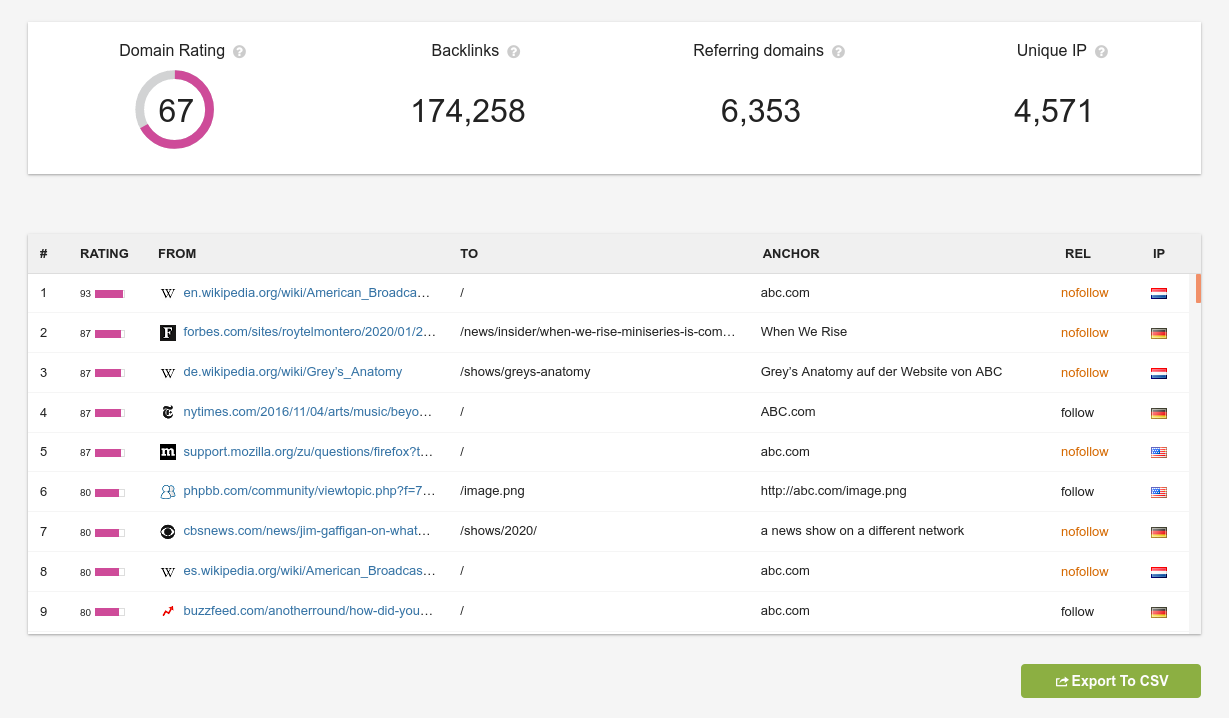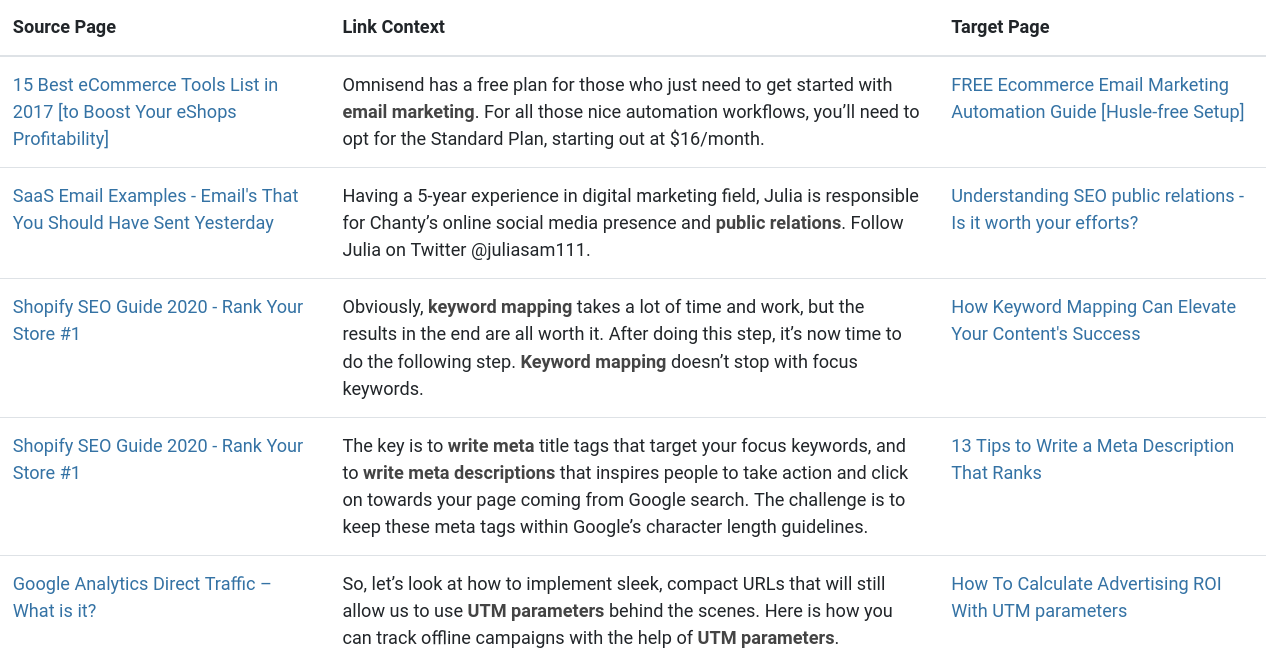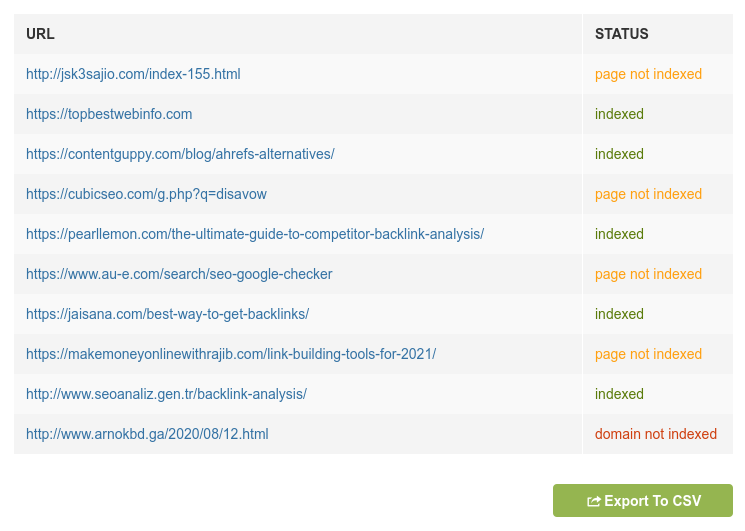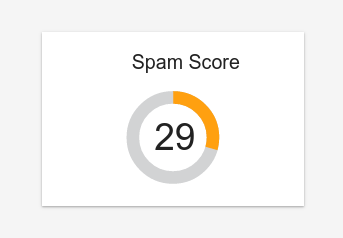Backlink Checker
See up to 100 referring domains instantly with Linkody’s Free Backlink Checker.
Backlink Profile
The backlink profile of a website is a major criteria to rank high on search engines.
The Backlink Checker is an SEO Tool that gives an overview of the backlink profile of any website.
It provides the number of backlinks, the number of referring domains, and the 100 top backlinks.
The following information is given for each of these backlink:
- Domain Authority
- Source URL
- Target URL
- Anchor text
- Relationship type (rel attribute)
- Hosting country (IP)

What are backlinks
A backlink, also called "inbound link", "external link", or "incoming link" is a link between 2 different websites. This is unlike "internal links" that are links between pages of the same website.
Why are backlinks important
The number of backlinks, their relevance, and the authority of the referring domains are major criteria for ranking on Google and other search engines. All the backlinks of a website, their attributes (follow, nofollow, anchor text...), and the value of these links represent the website's backlink profile. :A strong backlink profile provides better opportunities to rank at the top of SERPS.
What is the Backlink Checker tool
The Backlink Checker is a free SEO tool offered by Linkody to get a quick overview of a website's backlink profile. The tool provides the total number of backlinks, the total number of unique referring domains, and a list of the first 100 strongest backlinks sorted by domain authority.
Tip: Use our main tool Linkody to get more than 100 backlinks, with a complete backlink profile and many additional metrics to assess the value of each link.
How to use the Backlink Checker tool
Enter the URL of the website you want to check and click on the "SEE BACKLINKS" button. The following information is provided for each backlink :
“Authority” - Domain authorityThe estimated quality of a domain as a whole, that shows how well the website is considered by search engines. This is quite cyclic and is dependant on factors including the number of high DA websites linking to the domain. The higher the better.
“From” - URL of the referring pageThe address of the specific page that links to your website. To avoid redundant results, only one URL is shown per referring domain, even if multiple backlinks are pointing to different pages.
“To” - Target URLThe target page on your website the backlink is pointing to.
“Anchor” - Anchor textThe displayed text used for the backlink.
“Rel” - Relationship typeThis can either be follow or nofollow. Nofollow links, in most cases, don’t help with rankings.
“IP” - Hosting countryThe IP of the website and where the servers are geographically located.
When to use the Backlink Checker SEO Tool
The first 100 strongest backlinks of a website give a good idea of its backlink profile strength.You can use the backlink checker tool to :
- Have an immediate overview of your backlink profile
- See how your backlink profile evolves over time
- Compare your website's backlink profile with your competitors
- Get ideas to acquire new backlinks
How do I improve my backlink profile?
Backlinks are one of the most important factors used by search engines. Therefore if you want to rank higher you need to focus on acquiring valuable backlinks.
The value of a backlink is based on many criteria. One of the most important is its relevance (the similarity of topics between the linked websites, and if the link sends the user to informative content in relation to the referring page). Another important criterion is the authority of the referring website. You can use our Website Authority Checker to immediately know the authority of any domain.
1.The first step in improving your backlink profile is to do a backlink analysis to see where you stand. How many backlinks do you have, from how many referring domains, how authoritative are these domains, what anchor text distribution do these links have, are there any potentially harmful links...
2.The second step is to disavow any toxic link. Toxic links dicrease your backlink profile value, harm your ranking, and even can get you penalized. Read our guide on how to spot and disavow bad backlinks.
3.The third step is to look at your competitors backlinks and compare their profile with yours. Learn how you can use this information to build your own backlinks with our guide on competitor backlinks.
4.The forth and last step is to build valuable and relevant backlinks. Read our complete guide on link building and apply the many white hat technique described in it to acquire new links.



